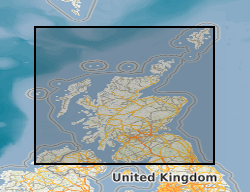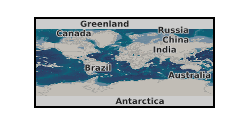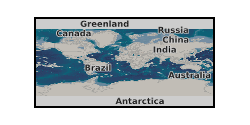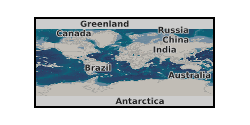Limestone
Type of resources
Available actions
Topics
Keywords
Contact for the resource
Provided by
Years
Formats
Representation types
Update frequencies
Scale
Resolution
-

This raster dataset provides the modelled temperature at the top of the early Carboniferous limestone (ECL) in the Northern and Southern provinces in Great Britain. The data were created by D J.R. Jones, T. Randles, T. Kearsey, T.C. Pharaoh, A. Newell (2023). https://doi.org/10.1016/j.geothermics.2023.102649
-

The Land Survey Plans collection of c.1,520 plans consists largely of mine plans acquired by the Survey, including 492 non-coal mine plans deposited by the National Coal Board 1984-87, and copies of mine plans derived from various sources including '6-inch reductions'. The collection also contains about 500 miscellaneous plans extracted from other Land Survey records in order to benefit from specialised systems of archival storage. The Survey's collection of Northern England mine plans are being added to the LSP collection. The collection supplements the Plans Of Abandoned Mines (Other than Coal & Oil Shale) in Scotland (NONCOALPLANSCO) providing an index to plans other than coal and oil shale for Scotland. Indexed on BGS Plans Database Index. Coal Authority hold some non-coal plans for Scotland. All non-confidential data held by NGRC(N) is available to users. Mainly coalfield areas of Central Scotland.
-

This vector dataset represents the Variscan faults for the early Carboniferous limestone (ECL) in hot sedimentary aquifers in the UK, used by D J.R. Jones, T. Randles, T. Kearsey, T.C. Pharaoh, A. Newell (2023). https://doi.org/10.1016/j.geothermics.2023.102649.
-

This raster dataset shows the modelled P50 distribution of the theoretical potential 'heat-in-place' (HIP) across the northern and southern early Carboniferous limestone in Great Britain (PJ / km2), at a resolution of 2500 m x 2500 m. The HIP is calculated for resource temperatures greater than 50 degrees Celsius, which represents the minimum temperature required for direct use of heat from hot sedimentary aquifer resources. The HIP characterises the heat resource available in an aquifer according to the USGS definition described in e.g. Muffler and Cataldi (1978). Its calculation is part of the research published by D J.R. Jones, T. Randles, T. Kearsey, T.C. Pharaoh, A. Newell (2023). https://doi.org/10.1016/j.geothermics.2023.102649. Areas of high uncertainty are delineated in the published paper.
-

This raster dataset represents the depth in metres to the top of the early Carboniferous limestone (ECL) over the Northern and Southern Provinces in Great Britain. The raster grid is provided at a 2500 m resolution. The layer can be used to identify prospective geothermal heat resources, such as areas with deep burial depths beneath thick Permian-Mesozoic sequences, as in the Cheshire Basin, and the flanks of the East Irish Sea and Southern North Sea basins; or beneath thick later Carboniferous strata, as in the Stoke-on-Trent area.
-

The data deposit includes results from 12 experiments that reacted carbon dioxide, seawater and limestone as a method of CO2 sequestration (as xlsx files). The data were obtained by Dr Huw Pullin, Cardiff University as part of a UKRI funded research project. Experiments were conducted under controlled temperatures (20degC), and CO2 pressures (5 and 50% v/v at 1 atm). The methods used are described in Xing et al., 2022 Chemical Engineering Journal. 431. 134096 DOI: 10.1016/j.cej.2021.134096
-

This dataset represents the thickness in metres of the early Carboniferous limestone (ECL) over the Northern and Southern Provinces in Great Britain. The layer may be used to identify prospective geothermal heat resources, such as areas with deep burial depths beneath thick Permian-Mesozoic sequences, as in the Cheshire Basin, and the flanks of the East Irish Sea and Southern North Sea basins; or beneath thick later Carboniferous strata, as in the Stoke-on-Trent area.
-

Database of 3770 chemical analysis of limestone samples taken from across the UK. Analyses include CaO, SO3, Na2O,F, SiO2, MgO, Al2O3, K2O, SrO, P2O5, Cu, Pb, Zn, MnO, Fe. Location, sample type and host description are given. A limited number of samples, scattered across the UK.
-

A laboratory µ-CT scanner was used to image the dissolution of Ketton, Estaillades, and Portland limestones in the presence of CO2-acidified brine at reservoir conditions (10 MPa and 50 °C) at two injected acid strengths for a period of 4 h. Each sample was scanned between 6 and 10 times at ~4 µm resolution and multiple effluent samples were extracted. See also paper: H.P. Menke et al. Geochimica et Cosmochimica Acta 204 (2017) 267-285. https://doi.org/10.1016/j.gca.2017.01.053.
-

We investigated the physical basis of this weakened trapping using pore scale observations of supercritical CO2 in mixed-wet carbonates. The wetting alteration induced by oil provided CO2-wet surfaces that served as conduits to flow. In situ measurements of contact angles showed that CO2 varied from nonwetting to wetting throughout the pore space, with contact angles ranging 25° <θ< 127°; in contrast, an inert gas, N2, was nonwetting with a smaller range of contact angle 24° <θ< 68 °. Observations of trapped ganglia morphology showed that this wettability allowed CO2 to create large, connected, ganglia by inhabiting small pores in mixed-wet rocks. The connected ganglia persisted after three pore volumes of brine injection, facilitating the desaturation that leads to decreased trapping relative to water-wet systems. This data is associated with this open access publication: Environ. Sci. Technol. 2016, 50, 18, 10282-10290. https://doi.org/10.1021/acs.est.6b03111.
 NERC Data Catalogue Service
NERC Data Catalogue Service